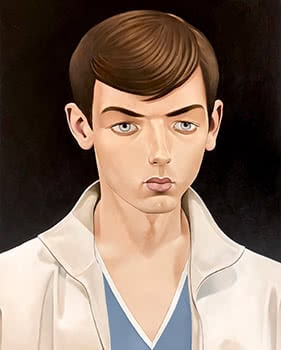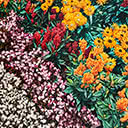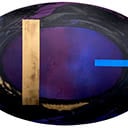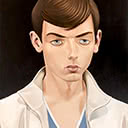Edward Krebs
100 x 80 cm
est. $75,000 - 95,000
PROVENANCE Tracy Williams Ltd, New York Private Collection, Auckland Literature
Former head of Contemporary Art at Christies, Tracy Williams was Stichbury's New York dealer located in the West Manhattan neigbourhood of Chelsea, hallowed ground for contemporary artists. Stichbury was represented by Williams in two solo shows, The Proteus Effect, 2010 and The Superflous Man, 2012. Stichbury was the only figurative painter she exhibited and her only artist from New Zealand. She also held positions as Senior Vice President in the Contemporary Art Department at Sotheby's and directorships at international dealers Michael Klein, Zwirner & Wirth. Williams likened Stichbury's style to that of Otto Dix and Lucien Freud - I don't think there is anyone like him (now).
In an article published on American online arts magazine Hyperallergic, critic John Yau wrote of Stichbury's work: Peter Stichbury is a portrait painter whose work is unlike anyone else that I know of, and I am only stating the obvious.
For all of their nearly oppressive flawlessness, Stichbury's paintings and drawings do not look back to the repository of classical ideas, but to a world replete with cosmetic surgery, Photoshop, Facebook, Twitter and reality television, just to name a few of the ways society exhibits new and improved faces. Along with Ingres, I would advance that Stichbury belongs to a group of linear portrait painters that includes Christian Schad, Tamara de Lempicka, and early Lucien Freud, particularly "Girl in Bed" (1952), which is of his then wife, Lady Caroline Blackwood, who was known for astonishingly large blue eyes.
The longer you look at Stichbury's paintings, the weirder they become. It is almost as if the figures in them have become too perfect, too manicured, too controlled.
As viewers, we might have occasion to remember that this control is an illusion, that dissipation and entropy are unavoidable. Stichbury's fascination with the world of self-representation in the age of digital media goes far beyond the surface - it is a meditation on the lengths to which we will go to avoid being human and aging, and how deeply human such attempts make us.
In 1987 Peter Stichbury graduated from Elam School of Fine Art and won the James Wallace Art Award. Gathering ideas from magazines, the internet, popular culture and his childhood, the artist continues to develop a body of work exploring, interpreting and reflecting upon the nature of identity. Contrary to common opinion, Stichbury's stunning paintings, art prints and sketches of gorgeous waifs, nerdy yet strangely cool boys or professors aren't merely the musings of an artist obsessed with surface aesthetics. Whilst fascinated by appearances, his interest cuts deeper and a little darker. Stichbury's talent lies in making beautiful people look interesting and interesting people look beautiful and it's proving lucrative, at least for the collectors. Furthermore, the American market is taking notice, a fact reinforced by several appearances of his work at the influential annual ArtLA Fair and the burgeoning fanfare enjoyed through his NYC dealer, to the point where new works are rarely available in his home country.





